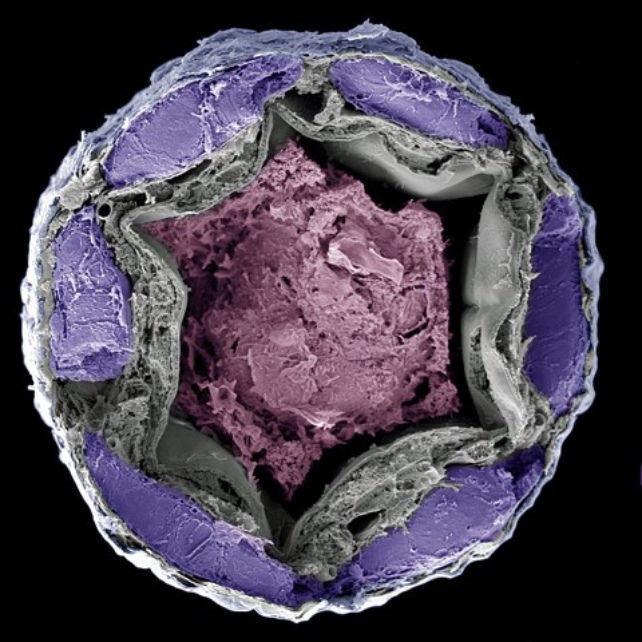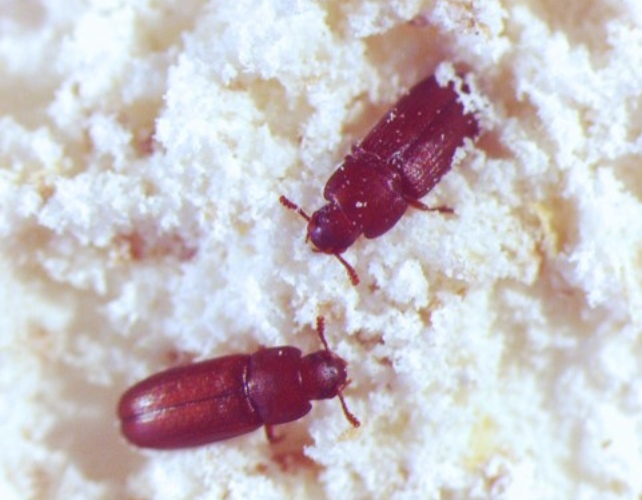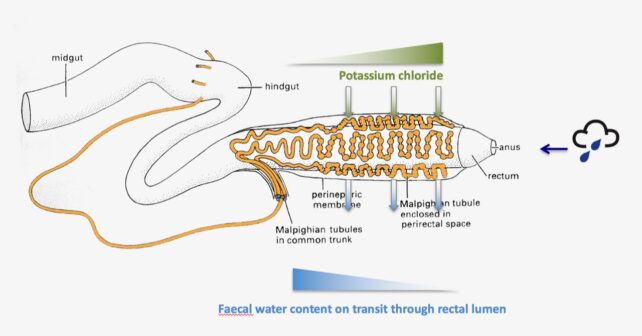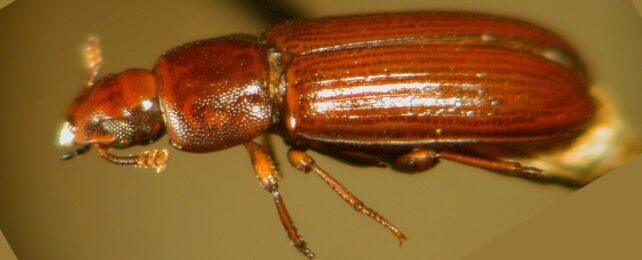All life on Earth depends on water, including us. Some of us consume water the old-fashioned way by drinking it with our mouths, others more creatively.
Beetles can rehydrate themselves by opening their rectums and drinking trace amounts of water floating in the air.
They can also reabsorb water from their poop, and their butts are surprisingly proficient at wringing moisture out of it, too.
With their specialized rectal ability, beetles can survive in the driest regions on Earth, including the flour and grains in your pantry.
We've known about this unique approach to water consumption for more than a century, but now a new study has gotten to the bottom of one of the ways that beetles achieve this.
"A beetle can go through an entire life cycle without drinking liquid water. This is because of their modified rectum and closely applied kidneys, which together make a multi-organ system that is highly specialized in extracting water from the food that they eat and from the air around them," explains biologist Kenneth Veland Halberg from the University of Copenhagen in Denmark.
"In fact, it happens so effectively that the stool samples we have examined were completely dry and without any trace of water."

Halberg and his team at the University of Copenhagen worked with researchers from the Universities of Edinburgh and Glasgow in the UK to shed light on how insects have evolved their water-recycling and water-conservation mechanisms.
The red flour beetle (Tribolium castaneum) is often used to study insects because its biology is similar to other insects, its genome is well-sequenced, and it is easily accessible as an everyday kitchen pest.

The researchers used RNA sequencing to compile an atlas, called – you guessed it – BeetleAtlas, detailing the developmental stages of T. castaneum so they could compare gene expression between different organs and at different times in their lives.
By looking in BeetleAtlas for genes that were expressed more in the rectum, the researchers could focus on one in particular, called NHA1.
"The gene we have discovered is essential to this process, which is new knowledge for us," says Halberg.
Halberg and his team found that a protein called Tiptop controls how much NHA1 is made and also helps make leptophragmata cells, a unique group of cells mostly found in the beetle's rectal complex.
Only leptophragmata cells express NHA1, with closer examination showing that these cells play a critical role in the beetle's ability to take in water via its posterior.
"As the beetle's kidneys encircle its hindgut, the leptophragmata cells function by pumping salts into the kidneys so that they are able to harvest water from moist air through their rectums and from here into their bodies," Halberg explains.

The team showed that NHA1 expression increased in beetle butts when the animals were exposed to drier conditions, allowing them to absorb more water from the environment and their feces.
What's more, when NHA1 functionality was turned off in the lab, the beetles lost more water through excretion, making it harder for them to survive in dry conditions and demonstrating that NHA1 is important for the transport of water from their rectums to their body.
While these findings help us understand the beetles better, they can also serve a practical purpose.
Thousands of tons of food are lost every year due to insect pests, and the impact on developing countries' food security is particularly severe. So finding ways to mitigate beetle pests is vital, but many beetles and other insects are critically important to our world, so we need to protect them.
"Insects are particularly sensitive to changes in their water balance," says Halberg. "As such, this knowledge can be used to develop more targeted methods to combat beetle species which destroy our food production, without killing other animals or harming humans and nature."
To facilitate future studies, the authors have made BeetleAtlas available to other scientists. Expression in over 16,500 genes in the Tribolium genome can now be easily compared thanks to their RNA sequencing that spans embryonic, larval, and adult stages.
The research has been published in Proceedings of the National Academy of Sciences.
